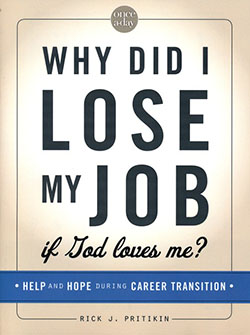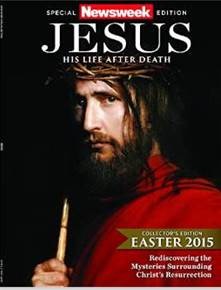 The Bible continues to be the world’s bestselling book. Doubters, skeptics, and critics have attempted to discredit it, ignore it, and ban it. Yet the Bible has outlived them all. What is it about the Bible that is so compelling for countless generations? And how can you communicate to skeptics the Bible’s validity?
The Bible continues to be the world’s bestselling book. Doubters, skeptics, and critics have attempted to discredit it, ignore it, and ban it. Yet the Bible has outlived them all. What is it about the Bible that is so compelling for countless generations? And how can you communicate to skeptics the Bible’s validity?
Bible Gateway interviewed Dr. John Dickson (@johnpauldickson), about his book A Doubter’s Guide to the Bible: Inside History’s Bestseller for Believers and Skeptics (Zondervan, 2014).
[Also see the guest blogpost by Dr. Dickson, Challenge for Skeptics: Read 100 Pages of the Bible.]
How do you find common ground with a skeptic who doesn’t believe in the validity of the Bible?
Dr. Dickson: It really depends what their doubts are. If they have historical questions, I try to tackle those. If philosophical, I do walk down that path. Ultimately, I want skeptics to actually read the Bible, because many of the criticisms thrown at Christians today are ‘secondhand’ one-liners out of the atheist playbook. There’s nothing like confronting the Book itself, personally, to really feel its force. I often say, give the Bible 100 pages, slowly, with some technical assistance, just like you would some other major classic of Western literature.
 If I were a skeptic, where would you tell me to start an investigation of the Bible?
If I were a skeptic, where would you tell me to start an investigation of the Bible?
Dr. Dickson: No doubt, a Gospel. Eusebius tells us that the first evangelists of the post-apostolic era preached Christ where he was not known “and passed on the writing of the divine Gospels.” So this is an ancient form of engagement! One of the most enjoyable things I do in ministry is conduct short courses on the Gospel of Luke in my lounge room with a small group of skeptics and inquirers. Leading them through the life of Jesus raises all the usual questions—the existence of God, the problem of suffering, other religions, and so on—but keeps the conversation connected to the Bible’s center, Jesus Christ. In fact, the week I get back home from the US I will be running another of these courses. It is a privilege.
How do you sum up the “basic framework” of the Bible?
Dr. Dickson: The Bible recounts the interaction of God with his people. It is split into two sections, the Old Testament (OT) and the New Testament (NT). The Old Testament is the record of God’s dealings with his chosen people, Israel, and covers the time period from the “Beginning”—whenever that was—to roughly 500 BC. The New Testament begins with the birth of Jesus (shortly before the AD 1 mark), tells of his life, teaching, death, and resurrection, and includes numerous texts written to the first generation or two of Christian believers, up to the end of the first century. A key thing to remember about how Christians read this big book is that they have always insisted on two simple things: first, that the Old Testament points forward to what Jesus would do in the New Testament; and, second, that we must therefore read the Old Testament through the lens of the New Testament. The Bible is a story that stretches from creation to eternity, giving everything in between a particular shape and substance. In Bible-speak, this is called “salvation history” or “biblical theology,” an account of how God planned, revealed, and executed his purposes for the world.
It seems that most people don’t see how the Old and New Testaments reflect the same message. But you do?
Dr. Dickson: Yes, I do. The shape of both the Old and New Testaments is vertical and horizontal, partly about love for God and partly about love for neighbor. The Ten Commandments, which introduce all of Israel’s laws, consist of four commandments about what one does for God, followed by six commandments about the treatment of others. The rest of the Bible, this vast story, concerns God’s remedy—in biblical speak, “redemption.” Redemption in the Bible is not just a spiritual rescue. It involves three dimensions: God intends to redeem our relationship with him, our connections with one another, and our enjoyment of creation itself. The Bible’s redemptive plan is not just about putting souls into heaven. God wants to redeem all things, whether things on earth or things in heaven—which doesn’t leave much else!
The story of Adam and Eve points to our humanity, our sinfulness. But rather than mourning our brokenness, you say this understanding brings us to peace?
Dr. Dickson: The story of Adam and Eve, or the principle of human sinfulness that springs from it, is a key way that Christians make sense of the evil and darkness in the world. It’s an idea that shapes everything, including Christian anthropology. The expectation is that people, all of us, are sinful. This might seem depressing, as Nietzsche certainly suggested, but there is also a liberating realism in believing we are fundamentally glorious and fundamentally wretched at the same time. I have often thought it would be a terrible burden to think we are good through-and-through. How could we live with the perpetual disappointment of daily evidence to the contrary? But a doctrine of sin liberates us from these expectations. I am “Adam;” you are “Adam.” This is not to say that Christians become comfortable with their sins, but they do begin to see through the fantasy of imagining we are deeply and inherently good. And that realization brings a peace.
How did Abraham’s covenant with God set up our understanding of grace, and in turn, differentiate Christianity from other world religions?
Dr. Dickson: God’s calling of Abraham and his covenant with him do not depend on a believer’s behavior but on the Almighty’s trustworthiness. Abraham did obey God, but his actions were a response to divine favor, not the means of securing it. Abraham is the paradigmatic sinner startled by grace—lost but sought and saved. This is exactly how relationships with God are structured in Christianity, from the first book (Genesis) to the last book (Revelation). They are entirely grace-based and have nothing to do with merit or the particular goodness or badness of someone. The structure of relationship with God in a typical religious framework is: obedience first, favor second. The structure of relationship with God, found in the call of Abraham and then throughout the Bible, is: favor first, obedience second.
In what way is Revelation a grand bookend to the Genesis story?
Dr. Dickson: Well, it is very striking that the last two chapters of the Bible (Rev. 21-22) are replete with references to the first two chapters of the Bible (Gen. 1-2). The ‘good’ of Genesis 1 is recovered and surpassed in the glory of the new creation. The ‘tree of life,’ from which humanity was banished in Genesis, reappears in Revelation as the pledge of eternal life for God’s people. All three relationships which fell apart after Genesis 1-2 are recovered in Revelation 21-22: our social interactions with one another are restored in a new city, ‘Jerusalem;’ our connection with the physical environment itself is renewed with a ‘new earth;’ and, above all, the presence of God among his people in Eden is reclaimed in the words of Rev 21, “God himself will be with them.” The picture of salvation in Revelation is nothing less than the reconciliation of all things in Christ.
As your book concludes, you talk about how nearly every culture we know about has made three questions a core part of its philosophical curiosity. What are those questions?
Dr. Dickson: The questions are: How do we connect with our Source? How do we get along with one another? How will the pain of material existence be resolved? It seems that these are the universal questions, and I aimed to show throughout this new book that the Bible offers a deliberate and comprehensive set of answers. From Genesis to Revelation—the bookends of the Bible—Christian Scripture says the Creator has disclosed how we can be reconciled to him, how human communities can flourish, and how creation itself will be restored. That is the story of the Bible. And it satisfies our deepest longings. It’s water for our thirst.
Which part of the Bible speaks most effectively to the way Christians should be living their daily lives?
Dr. Dickson: I can’t do better than repeat the answer of one of my old New Testament instructors and the former Archbishop of Sydney Donald Robinson: the Gospel and the Apostle. In his stunning, but little known, book, Faith’s Framework, Robinson argues that the ‘structure’ of New Testament theology is precisely the foundation of Christ in the four Gospels and the explication of Christ in the New Testament epistles. That’s how I think about how the Bible addresses our daily lives. We look to the teaching of Christ first. We hear him calling on us to love our enemies, refuse to judge, shun the adulteries of the heart, practice mercy like the Samaritan, and so on. Then we turn to the apostolic letters to learn how this gospel-ethic plays out in the messiness of the non-Christian world. This is no mere moralism, for the apostles will always lay their theological foundation, the saving work of Jesus Christ, before outlining how the way of Christ is to be lived out from day to day. It is Gospel and Apostle, always.
Bio: John Dickson (PhD, Macquarie University, Sydney) is a senior research fellow of the Department of Ancient History, Macquarie University; co-director of the Centre for Public Christianity; and senior minister at St. Andrew’s Roseville. The author of more than a dozen books, he is the host of two major historical documentaries for Australian television and is a busy public speaker in corporations, universities, churches, and conferences.
 Are you unemployed? Are you struggling with the emotional toll of that unemployment?
Are you unemployed? Are you struggling with the emotional toll of that unemployment?













 While my dad provided for our family and was a good father in many respects, we never really connected emotionally. In our case, there was always a distance between us.
While my dad provided for our family and was a good father in many respects, we never really connected emotionally. In our case, there was always a distance between us.

